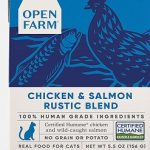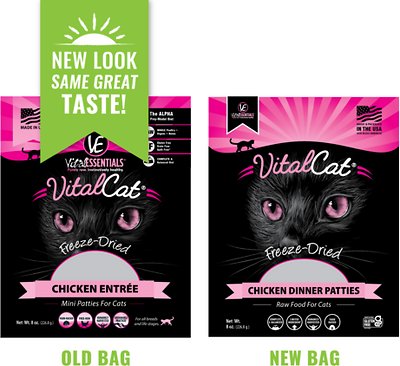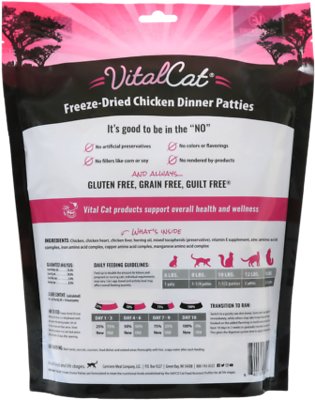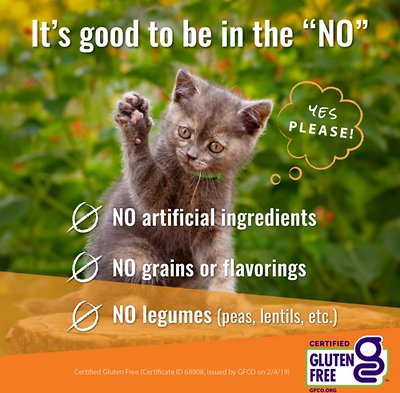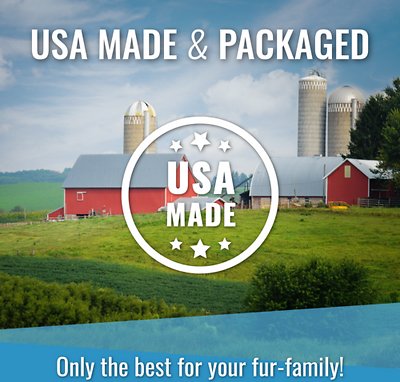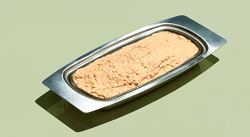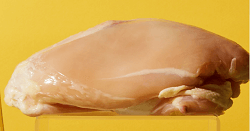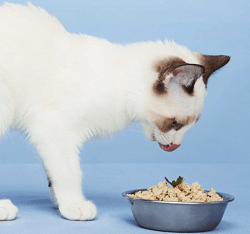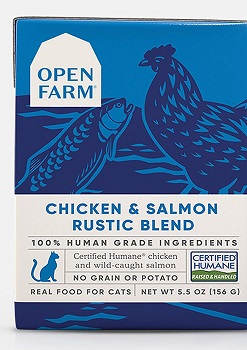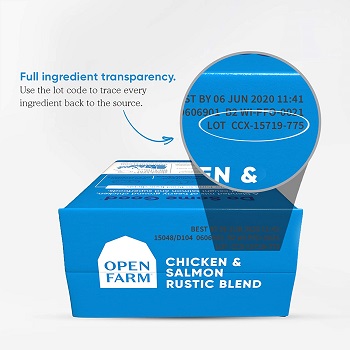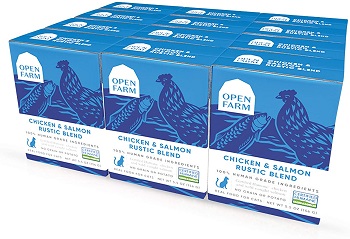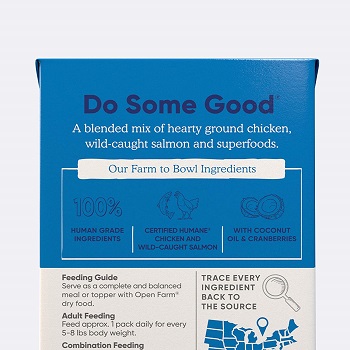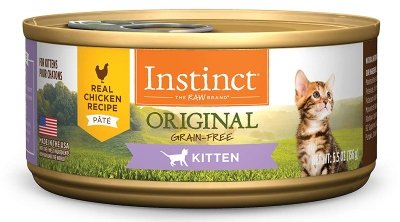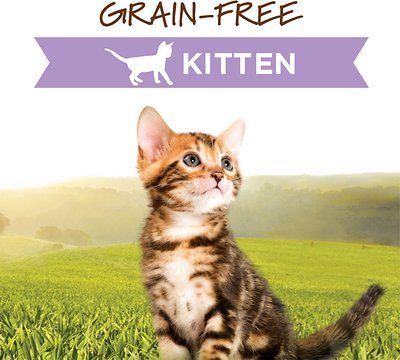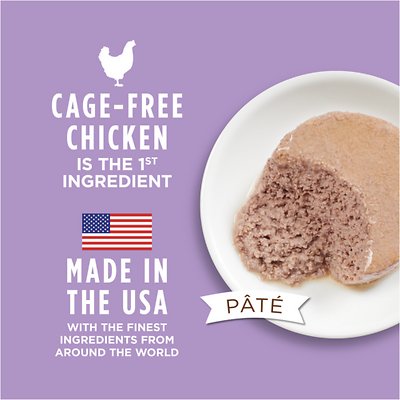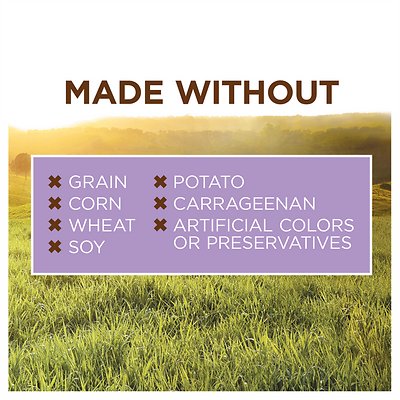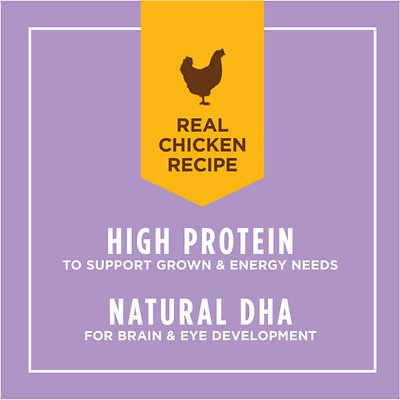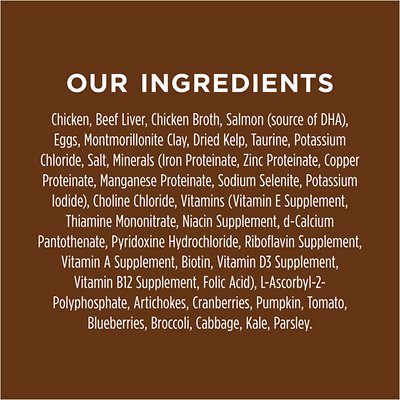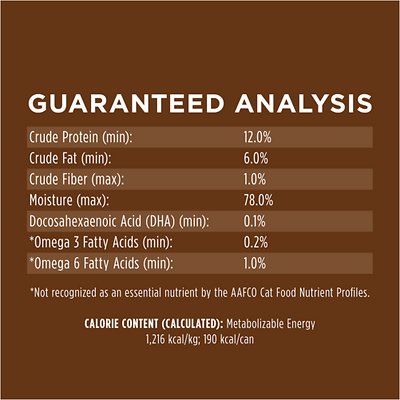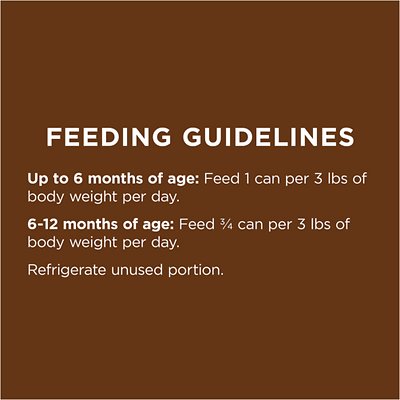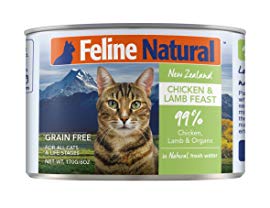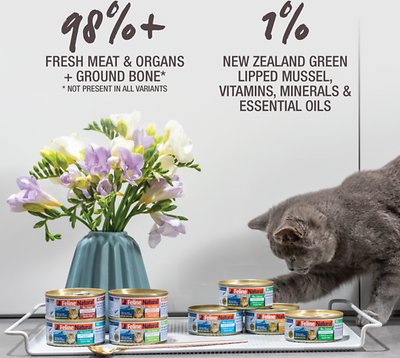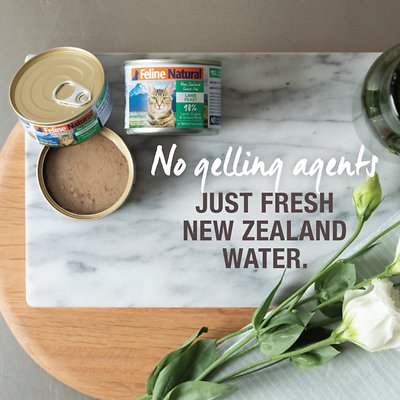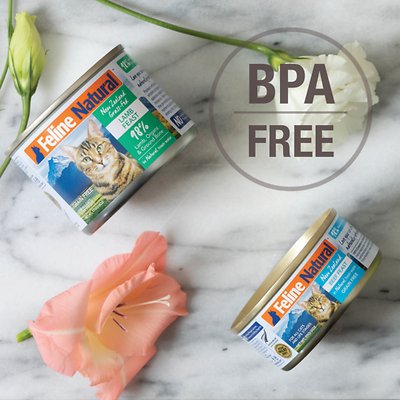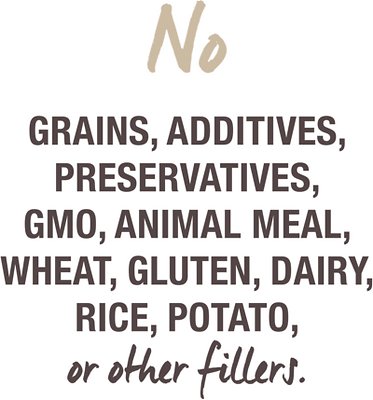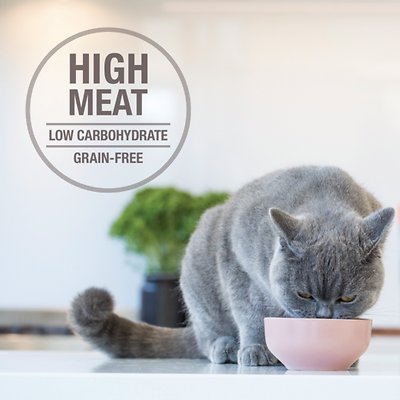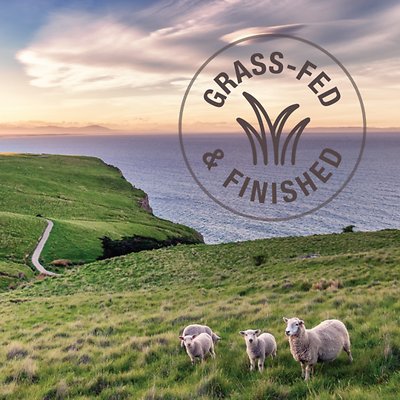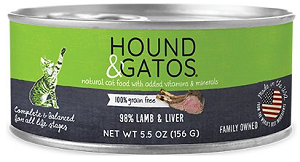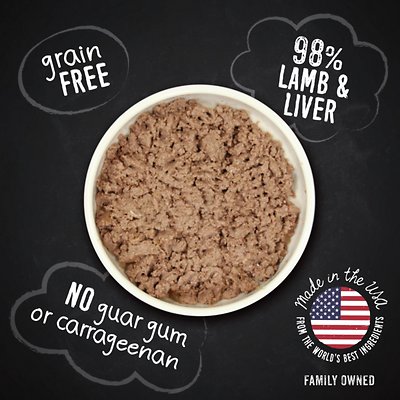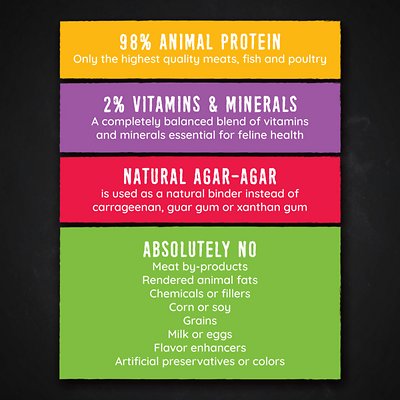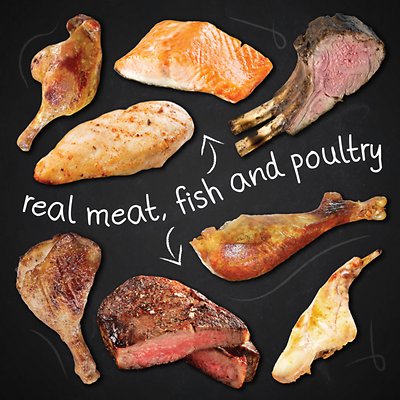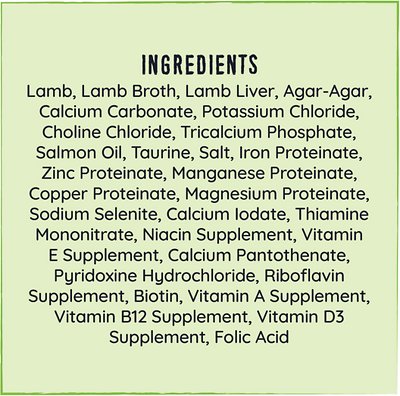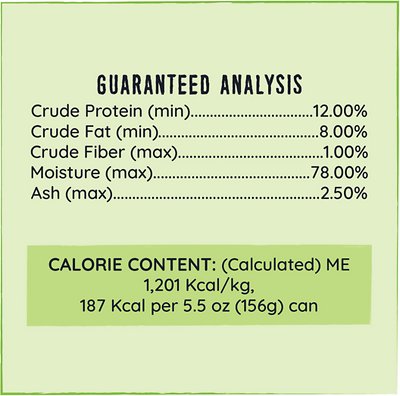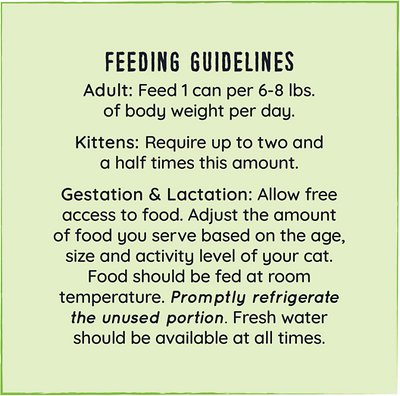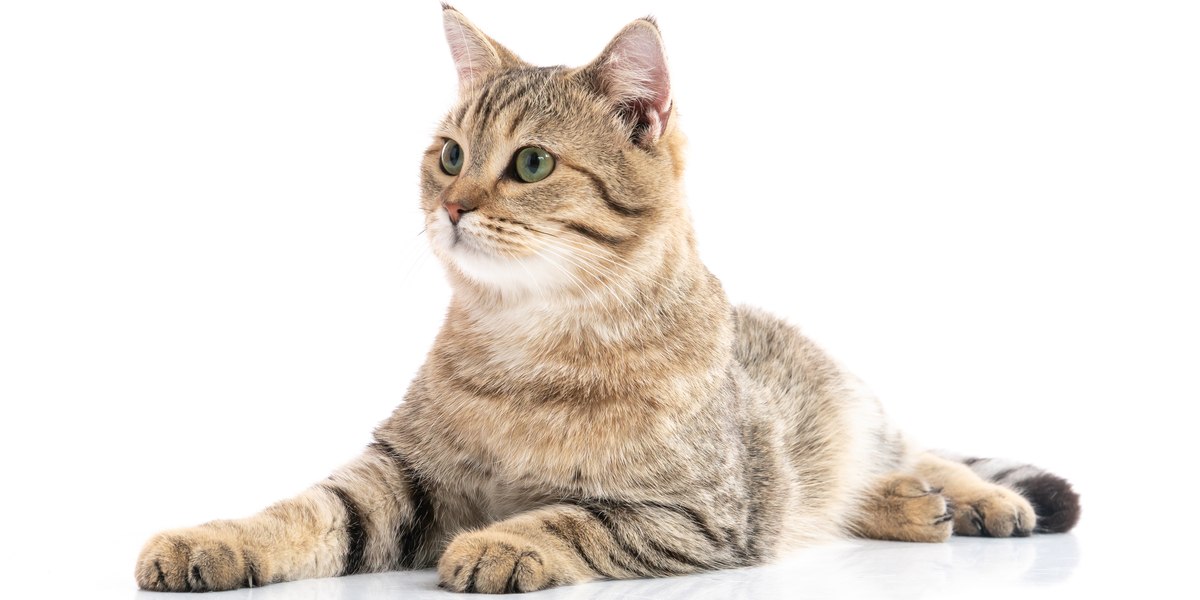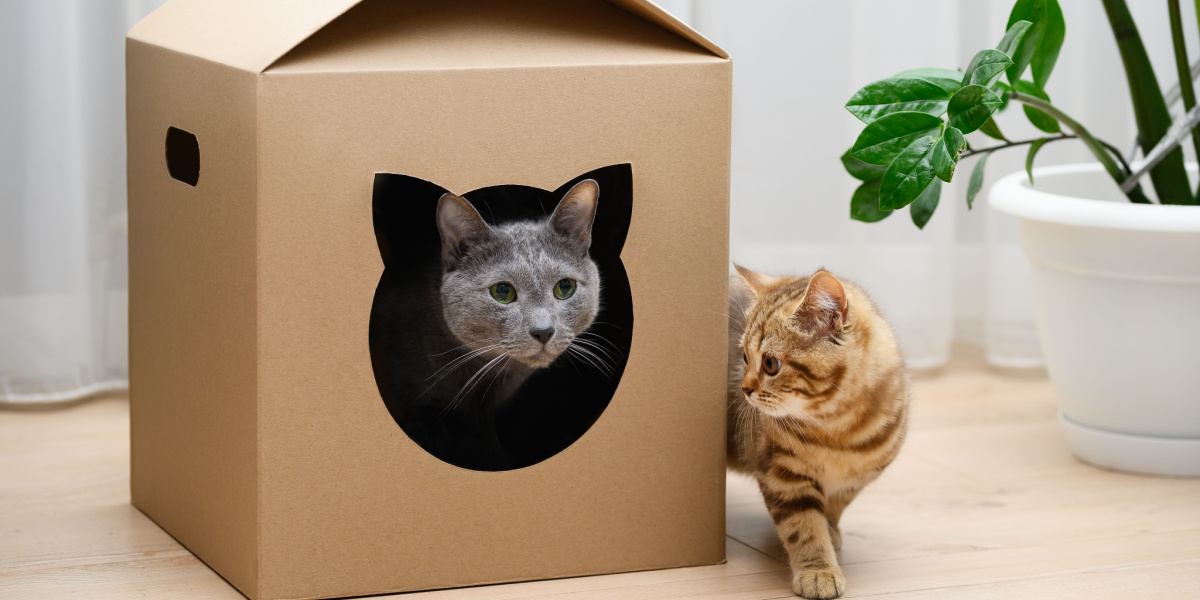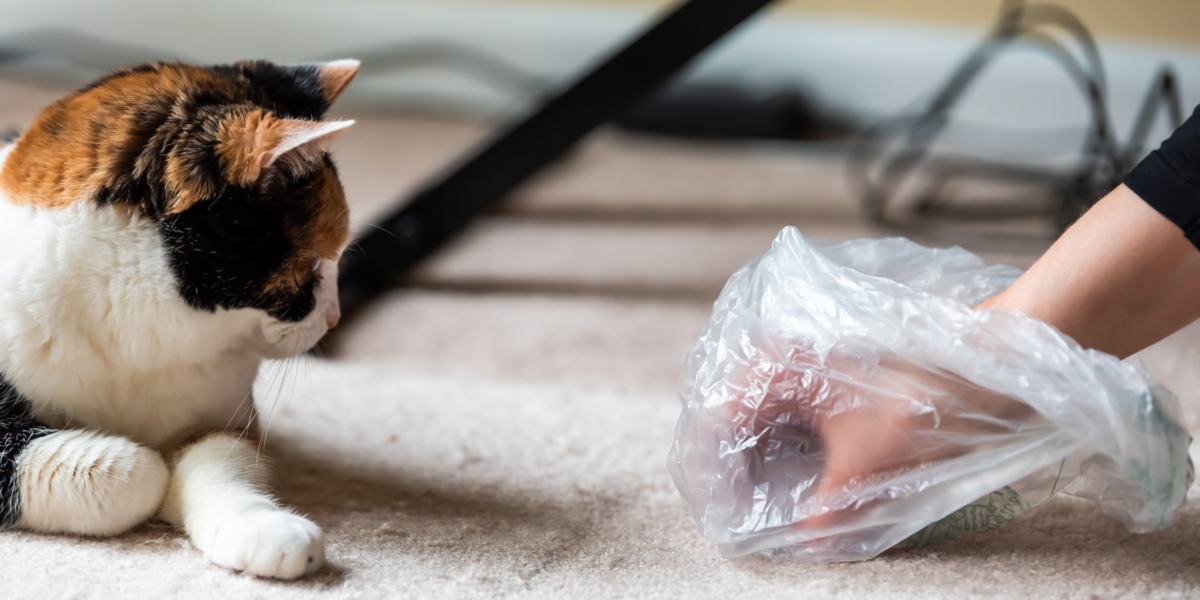The 6 Best Cat Foods For Bengal Cats
This page contains affiliate links. We may earn money or products from the companies mentioned in this post through our independently chosen links, which earn us a commission. Learn More
What’s the best cat food for Bengal cats? Take inspiration from their wild ancestry.
If you can’t give your Bengal raw food, try the next best thing—freeze-dried food. Not all freeze-dried products are ideal for Bengals, but the best ones are rich in whole-prey ingredients, have just the right amount of bone, and don’t contain any additives that could harm your cat.
That’s why we recommend Vital Essentials freeze-dried chicken mini patties as the best cat food for Bengal cats. Before reviewing this food and our other top six favorites, let’s talk about your Bengal’s dietary needs.
Quick Navigation
At A Glance: Best Cat Foods For Bengal Cats To Buy
We highly recommend looking at the comparison table we have below where we highlighted the features of each product. You’ll also find more detailed information about each product later in the article.
Compare Best Cat Food For Bengals
|
Overall Best
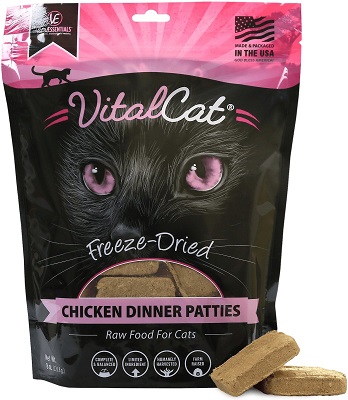
1. Vital Essentials Chicken Dinner Patties Grain-Free Limited Ingredient Freeze-Dried Cat Food |
Best For Kittens
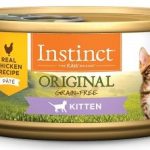
4. Instinct Kitten Grain-Free Pate Real Chicken Recipe Natural Wet Canned Cat Food |
Best For Seniors
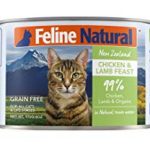
5. Feline Natural Chicken & Lamb Feast Grain-Free Canned Cat Food |
Best For Sensitive Stomach
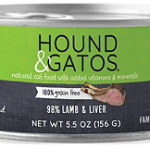
6. Hound and Gatos Lamb and Lamb Liver Canned Cat Food |
||
|
Protein
45% Min |
Protein
21% Min |
Protein
8% Min |
Protein
12% Min |
Protein
9.6% Min |
Protein
12% Min |
|
Fat
15% Min |
Fat
8.05% Min |
Fat
6% Min |
Fat
6.0% Min |
Fat
5.0% Min |
Fat
8.0% Min |
|
Fiber
3.0% Max |
Fiber
0.4% Max |
Fiber
2% Max |
Fiber
1.0% Max |
Fiber
0.3% Max |
Fiber
1.0% Max |
|
Life Stage
Adult |
Life Stage
Adult |
Life Stage
Maintenance |
Life Stage
Kitten |
Life Stage
All Life Stages |
Life Stage
Adult |
|
Type
Freeze-Dried |
Type
Fresh |
Type
Wet |
Type
Wet/Canned |
Type
Wet/Canned |
Type
Wet/Canned |
|
Made In
United States |
Made In
United States |
Made In
Canada |
Made In
United States |
Made In
New Zealand |
Made In
United States |
Do Bengal Cats Need A Special Diet?
With his spotted coat, hunting instincts, and the way he swaggers through the house on long, seemingly jungle-ready legs, your Bengal provides constant reminders of his wild heritage.
Somewhere on the outer branches of your Bengal’s family tree is a cousin who still lives in the jungle. She swaggers on long legs not unlike your cat’s. Sometimes, you might think you see your own Bengal in her eyes when they lock on something skittering through the ferns.
This cat is a carnivore, thriving on a diet of small animals. A typical menu might include tree shrews, forest skinks, nuthatches, and fairy flies. She has a lithe, lean body and, despite not taking a single supplement, she has no nutritional deficiencies.
Your Bengal’s diet should be as similar to his cousin’s as you can get.
Feed your Bengal a carnivore’s diet. In a general sense, this means that his food shouldn’t contain anything that you wouldn’t find in the body of a shrew or lizard. Heart? Good. Eyeballs? Good. Brain? Good. Sweet potato? No, thanks.
This translates to high protein content, moderate fat, and low carbohydrate content. The best cat food for your Bengal is between 50% and 80% protein, 20% and 40% fat, and 0% to 10% carbohydrates.
Once you’ve gotten a species-appropriate recipe with plenty of animal parts and not a lot of plant ingredients, you can start thinking about things to avoid, like artificial dyes that could harm your cat over time and ingredients that stir up inflammation. You can think about wholesome additions to the basic ingredients, like fish oil as a source of omega-3 fatty acids or probiotics to support a healthier microbiome.
Our Top Picks For The Best Cat Food For Bengals
Now that you have a better understanding of how we came to our top picks, you’re probably eager to see them! Here are our top 6 picks for best cat food for bengals:
Vital Essentials Chicken Dinner Patties Grain-Free Limited Ingredient Freeze-Dried Cat Food
Product Info
- Protein: 45% Min
- Fat: 15% Min
- Fiber: 3.0% Max
- Life Stage: Adult
- Type: Freeze-Dried
- Made In: United States
Guaranteed Analysis

Dry Matter Basis

- Primarily made from animal ingredients, delivering carnivore-appropriate nutrition
- Doesn’t contain any artificial colors or preservatives
- Most cats like the food’s taste and texture
- A low-carbohydrate recipe
- Requires rehydration
To rehydrate the food, you’ll pour warm water over your cat’s portion, then let it sit for a few minutes until it gets soft.
The food is made from finely ground chicken with bone, chicken heart, liver, gizzard, and egg. In addition to the primary ingredients, the food contains raw goat’s milk. This unconventional ingredient adds texture and potential anti-inflammatory properties. Herring oil serves as a source of omega fatty acids, which can help to reduce inflammation and keep your Bengal’s skin and coat in top condition.
Overall, this is a protein-rich, low-carbohydrate food that uses a prey-inspired variety of muscle meat, organs, bones, and fat to deliver the nutrition your Bengal needs.
Smalls Fresh Smooth Bird
Product Info
- Protein: 21% Min
- Fat: 8.05% Min
- Fiber: 0.4% Max
- Life Stage: Adult
- Type: Fresh
- Made In: United States
Guaranteed Analysis

Dry Matter Basis

- Made with real animal protein as main ingredient
- No artificial additives or fillers
- Fresh cat food sent right to your home
- Limited number of high-quality natural ingredients
- Only available as part of a subscription
- Meals aren’t portioned for individual servings
This particular recipe features fresh chicken thighs and chicken breasts as the top two ingredients with chicken organs for supplemental protein and key nutrients. Small amounts of fresh veggies are included for nutrition with necessary vitamins and minerals added to ensure complete and balanced nutrition for your Bengal. It’s all served up fresh in a moisture-rich, flavorful package your cat will love.
What you’ll really appreciate about Smalls, however, is that they send the food right to your door. Simply fill out a profile for your cat and you’ll start receiving regular deliveries of your cat’s perfect diet. It’s really that easy.
Open Farm Chicken & Salmon Blend Wet Cat Food
Product Info
- Protein: 8% Min
- Fat: 6% Min
- Fiber: 2% Max
- Life Stage: Maintenance
- Type: Wet
- Made In: Canada
Guaranteed Analysis

Dry Matter Basis

- Made with human-grade ingredients
- Has a cat-friendly taste and texture
- Convenient custom delivery schedules
- Rich in animal-sourced nutrition
- Free of artificial colors and preservatives
- One of the most expensive foods on the market
- Contains some fruit and vegetable ingredients
- Some people might not like the subscription format
Though a food that contains cantaloupe and carrots is not ideal, this food has a few things that set it apart from the competition. It’s protein-rich with chicken and chicken liver taking center stage. It’s relatively low in carbohydrates with 10% calories from carbohydrate. All of the ingredients are human-grade, meaning that they are handled and processed according to USDA standards for human food.
It also has a different sales model than the typical cat food. Instead of buying a case at a time, you’ll sign up for a membership. This gives you customized portions and a personalized delivery schedule. If you’re into the idea of cat food that never runs out and is made to order just for your cat, Open Farm might be a brand to consider.
Instinct Kitten Grain-Free Pate Real Chicken Recipe Natural Wet Canned Cat Food
Product Info
- Protein: 12% Min
- Fat: 6.0% Min
- Fiber: 1.0% Max
- Life Stage: Kitten
- Type: Wet/Canned
- Made In: United States
Guaranteed Analysis

Dry Matter Basis

- Rich in animal-sourced protein
- Contains a mix of muscle meat, organs, and eggs
- Low carbohydrate content
- Contains salmon as a source of DHA
- Contains a sprinkling of unnecessary plant ingredients
Can Bengal Kittens Eat Raw Food?
Some people successfully introduce raw food to their kittens almost as soon as they are weaned. While not necessarily harmful, this approach requires caution and forethought.
Because indoor kittens haven’t been exposed to the variety of organisms outside, their immune systems may not be ready for the bacteria found in raw meat. For that reason, you may want to wait until your Bengal is around 4 months old before introducing raw food.
Regardless of what type of food you choose, make sure it’s nutritionally adequate to support your baby Bengal’s growth. The AAFCO nutritional adequacy statement is a good place to start. It should tell you that your kitten’s food is either nutritionally complete and balanced for “growth” or “all life stages”.
If you’re more comfortable with canned food, this product from Nature’s Variety Instinct is a good one to consider. It’s made with kittens in mind, with plenty of protein from chicken, beef liver, salmon, and eggs. Salmon is a natural source of omega-3 fatty acids that support brain and eye development while keeping your kitten’s coat gleaming.
With minimal fruit and vegetable ingredients, the food is low in carbohydrates. It’s a slow-burning, carnivore-appropriate food that seems to have what it takes to fuel all the growth and exuberance of your cat’s kittenhood.
Feline Natural Chicken & Lamb Feast Grain-Free Canned Cat Food
Product Info
- Protein: 9.6% Min
- Fat: 5.0% Min
- Fiber: 0.3% Max
- Life Stage: All Life Stages
- Type: Wet/Canned
- Made In: New Zealand
Guaranteed Analysis

Dry Matter Basis

- Rich in highly-digestible protein
- Contains green-lipped mussel as an anti-inflammatory
- Free of inflammatory carrageenan
- Made without artificial colors and preservatives
- Expensive
This canned food from Feline Natural is rich in highly-digestible protein from chicken and lamb. Muscle meat and organs account for 99% of the recipe. The remaining 1% of the recipe is composed of green-lipped mussel, vitamins, and minerals.
With green-lipped mussels as a natural source of omega-3 fatty acids, this is a good choice to keep your senior’s coat luminous and his joints comfortable.
Hound and Gatos Lamb and Lamb Liver Canned Cat Food
Product Info
- Protein: 12% Min
- Fat: 8.0% Min
- Fiber: 1.0% Max
- Life Stage: Adult
- Type: Wet/Canned
- Made In: United States
Guaranteed Analysis

Dry Matter Basis

- Primarily made from lamb, a novel protein for many cats
- Simple ingredient list reduces potential irritants
- Contains salmon oil, which may be able to reduce inflammation
- Free of commonly inflammatory ingredients
- Hound & Gatos foods get mixed reviews—some cats don’t like the way this food tastes
Whether he has food intolerances or seems sensitive to all foods in general, a cat with digestive issues will typically require a diet without excessive or inflammatory ingredients.
Short of tossing your Bengal a jungle rodent, your simplest options are foods with just a few animal-sourced ingredients and minimal carbohydrate content.
This food from Hound & Gatos gets excellent reviews from people with cats suffering from IBD and food sensitivities. It’s made from a single protein source—lamb. Some cat food manufacturers use generic liver, keeping you in the dark on exactly what animal that liver comes from. Not Hound & Gatos. They tell you it’s lamb liver, so you know that your cat is only eating one protein source and one potential allergen.
The food is thickened with agar-agar, which appears to be safer and less inflammatory than carrageenan. Salmon oil serves as a source of omega-3 fatty acids, which are anti-inflammatory and can help your sensitive cat feel better. Synthetic amino acids and vitamins make each meal nutritionally complete.
Final Thoughts
Use this article as a guideline when choosing the best cat food for your Bengal, but don’t feel limited to the products listed here.
As long as you give your Bengal a diet rich in muscle meat, organs, animal fat, and other carnivore-appropriate ingredients, you’re doing well.
And while you’re at it, consider what you’re feeding any other cats in your home.
At first glance, your Bengal appears to share more in common with his wild cousins, but his dietary needs are no more carnivorous than those of any other cat breed. British Shorthairs, Scottish Folds, and leopards alike share a need for prey-inspired nutrition.


